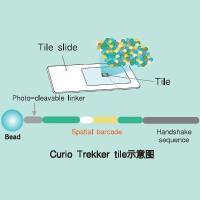Physical Mapping by Pulsed-Field Gel Electrophoresis
互联网
互联网
相关产品推荐

gel4/gel4蛋白Recombinant Neosartorya fumigata 1,3-beta-glucanosyltransferase gel4 (gel4)重组蛋白Glucan elongating glucanosyltransferase 4蛋白
¥2328

脉冲多普勒血流计Pulsed Doppler Flowmeter
询价

开场视频分析系统(inner open field )
¥20000

Trekker Single-Cell Spatial Mapping Kit 单细胞空间转录组分析试剂盒
询价

GEL/GEL蛋白Recombinant Suregada multiflora Ribosome-inactivating protein gelonin (GEL)重组蛋白rRNA N-glycosidase;allergen Gel m RIP蛋白
¥2616
相关问答

